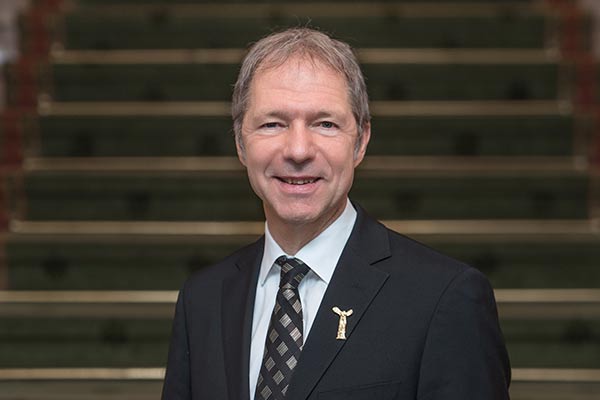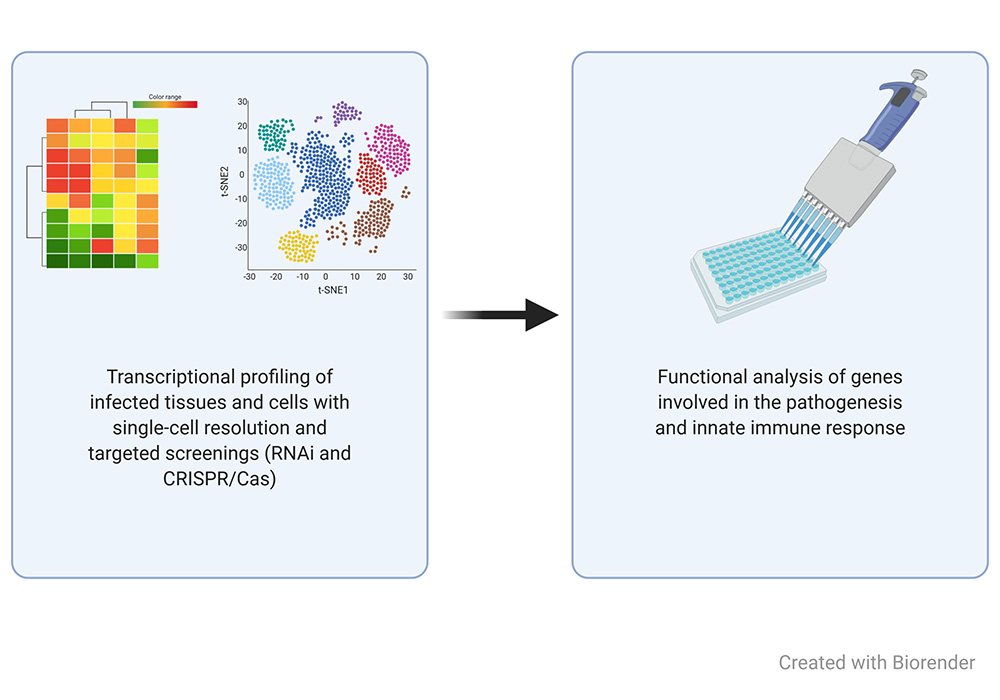Mechanisms underlying pathogenesis of SARS-CoV‑2 infections
Yannick Stahl – Hector Fellow Ralf Bartenschlager
SARS-CoV‑2 has caused a pandemic and is responsible for more than 18 million infections. It is hypothesized that COVID-19 is the result of killing of infected cells and excessive immune activation. To reveal cell types and pathways that are critically involved in viral replication and pathogenesis, I will use transcriptomics and functional studies of genes likely involved in these processes. The results might inform the development of therapeutic strategies and the discovery of biomarkers.
The severe acute respiratory syndrome coronavirus‑2 (SARS-CoV‑2) has caused a pandemic and is responsible for more than 18 million confirmed infections. Based on clinical observations, it is hypothesized that the coronavirus disease 2019 (COVID-19) is the result of virus-mediated killing of infected cells and excessive activation of the cytokine responses. However, to this point it is unknown which pathways are involved in the cytolysis, how cytokines are activated, which cells are responsible for the cytokine production in patients and which cells become infected or activated.
I will use transcriptional profiling of infected cells to identify changes induced by the infection to explain neurological manifestations that have been described in patients and to elucidate the route of infection and the impact of SARS-CoV‑2 on cells of the immune system. To reveal the cellular tropism and the activation pattern of cytokines in each cell population that might be involved in the pathogenesis of COVID-19, I will use single-cell RNA sequencing of infected precision-cut lung sections of SARS-CoV‑2 receptor transgenic mice and bronchoalveolar lavage of COVID-19 patients. These studies will be complemented by targeted screenings. Pathways of relevance will be studied mechanistically by using a combination of virology, immunology, cell biology and biochemistry methods. Pathways identified might serve as targets for therapy or could be used as biomarkers.
Yannick Stahl
Heidelberg UniversitySupervised by

Ralf Bartenschlager
Medicine & Biology

